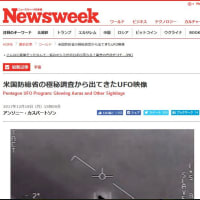this is this piece of sculpture is from
Bush mall in the Yucatan and it's
associated with the Maya and as you can
see it's a double feline figure two
Pumas or layer nine animals back to back
again we find a very similar device in
ancient Egyptian iconography to Lions
back to back often joined at the hip -
Lions fix's back to back as as here on
this Stella that stands between the paws
of the Sphinx see if I can get that shot
they were called the akka rule the gods
of yesterday and today and this device
of placing two felines back to back
again in my view is too similar to the
device found amongst the Maya to be
written off entirely as a coincidence
here we're looking at a piece of
Architecture from the from the Inka area
let me just try and get this shot so
difficult for me to see with all these
lights on me what I want to draw
attention to here is the way that the
block wraps around the corner this is a
supposedly inca wall just north of Cusco
in Peru and the blocks form a kind of L
shape as they wrap around the corner of
an unusual architectural device we find
exactly the same method of cornering
here in the valley temples that stands
next door to the Great Sphinx of Giza
excuse me I'll get the hang of this in a
minute a method of joining two blocks of
stone together this photograph was taken
at Tiahuanaco in Bolivia in the high
Andes and Tiahuanaco is a very
mysterious City and I'll be touching on
it in a few moments what I want to draw
attention to here is this imprint of a
metal bar which once joined these two
huge blocks of stone together of course
the metal bar has long since been
removed vandalized melted down but this
particular form of architecture is not
found anywhere else in the Americas but
it is found in Egypt we find it at Phil
I at elephantine and also here at
Dendera in Upper Egypt the same method
of joining stone blocks together and
here we're on the island of Sri Key in
Bolivia on lake titicaca looking at a
traditional method of boat design it's
one of the few places on lake titicaca
where these boats are still built these
reed boats with high curving brows and
according to local tradition the design
of these boats was brought to the andes
by the gods by the veera coaches as they
were called gods who were remembered as
being tall and pale skinned and bearded
who'd come from across the sea to South
America in a time of turmoil and
darkness after a great catastrophe and
who had brought with them this kind of
boat design and many many other skills
advanced his skills of civilization I'd
like to compare this this high proud
boat with this design from ancient Egypt
the so called solar boat of Khufu which
was found buried beside the Great
Pyramid of Egypt off the southern face
it's much bigger than the boats on the
Andes but the design is eerily similar
and this design has been studied by
marine experts and
they've concluded is rather interesting
they conclude that although the
materials used both in the Egyptian
boats and in the Andean boats are not
suitable for sailing on the open seas
the design that is incorporated in these
boats could only have been evolved by a
people with a long and solid tradition
of oceanic navigation people who needed
boats that could cut through high waves
and breakers and the suggestion is could
this design be a very ancient legacy
that was passed down and received both
by the Egyptians and by the peoples of
the Andes and expressed in the kind of
boats that they made in both areas such
boats are associated with the gods
the ancient Egyptians called their gods
the neat arewe and they said that they
had come from a land far away to the
south a land called tarney to rule
across vast expanses of ocean so whoever
they may have been these gods above all
else were navigators and seafarers and
navigators and seafarers need maps if
they're going to sail around the earth
now this map is a modern map and I
picked it up at the Library of Congress
in the United States it's an azimuthal
equidistant projection centered near
Cairo and in common with all modern maps
it incorporates a number of advanced
features it incorporates highly accurate
longitudes and particularly relative
longitudes and it incorporates an
advanced map projection it isn't easy to
represent a spherical object the earth
on a flat piece of paper and to do so
with a considerable degree of accuracy
and this is a problem that cartography
has had to overcome so we find good map
projections which require advanced
mathematics and good relative longitudes
interestingly enough there's a category
of ancient map which also shows these
modern features
and which doesn't fit with the received
view of the development of human history
one of the most famous of these maps is
the piri Reis map and I'm showing it
here because I want to compare the
projection of this map with the
projection here centered on Cairo notice
the west coast of Africa and the east
coast of South America and coming down
here to the Antarctic Peninsula hanging
up towards the South of South America
it's that precise projection that we
find on this map again there's the
west coast of Africa the east coast of
South America and coming down here we
find a representation of the northern
Antarctic Peninsula in when piri
Reis drew the map Antarctica had not
been discovered in fact it wasn't
discovered until by our
civilization so there immediately is one
anomaly on this map and another anomaly
is the mathematics used in the map
projection and a third anomaly is that
it incorporates highly accurate relative
longitudes to do longitudes accurately
on maps requires a chronometer a marine
chronometer that will keep accurate time
at sea and again this was something that
our civilization couldn't do until the
late th century so this map fragment
or though it is appears to incorporate
many features that are not supposed to
have been known about in piri Reis
explains why in these texts that he
wrote on the map he was a Turkish
Admiral and he wrote these texts on the
map and what they say is that the map is
not his own work it's a it's a work of
synthesis it's based on more than
earlier source maps that he put all
these maps together and derived his own
map from these and unfortunately the
source maps that piri Reis used have not
survived is it possible that the
advanced features of this map originate
in those lost
source maps which piri Reis told us went
back in some cases to before the time of
Christ and had come from the long-lost
Library of Alexandria in Egypt another
strange thing about the appearance of
Antarctica on this map it's been studied
by US Air Force cartographers and their
view is that what we're actually seeing
there is the sub Glacial topography of
Antarctica Antarctica as it looks
underneath the ice that now covers it
and this raises the question how long
has Antarctica been covered with the
two-mile thick ice cap that we now
presently see on it such questions would
be irrelevant if there were no other
maps in this category
if the piri reis map stood alone the
most sensible thing to do would be to
dismiss it as a coincidence but it
doesn't stand alone there's hundreds of
other maps that incorporate this same
information at a time when our
civilization had not yet acquired that
information this is the Mercator map
mecca tour is rather famous for his
Mercator projection that still dominates
most atlases today it's a th century
map and it shows Antarctica years
before Antarctica was discovered and
again it's based on earlier source maps
and again it incorporates accurate
relative longitudes so also the Arantes
phineus map that we're looking at here
another th century map mecca tour
includes it in one of his atlases and
here we see Antarctica looking a little
bit different with mountains clearly
visible along the coast and rivers
running down from those mountains in
places where great glaciers are known to
run today it looks on this map as though
Antarctica is partially d glaciated the
center of the continent appears to be
featureless and ice covered but the
coast is showing these unglaciated
features what might that mean this is a
map by philip brush an th century
geographer still good hundred years
before the discovery of antarctica and
it shows the continent as a kind of
archipelago two major land masses
divided by a clear waterway run
between them I wonder where he got that
idea from as a redrawing of the Mercator
map and the Arantes Finnick phineas map
and the bush map and here to the right
based on seismic surveys conducted in
international geophysical year in
is a view of what Antarctica actually
looks like underneath all that ice that
now covers it we're looking at the sub
racial landscape of Antarctica here and
while I wouldn't claim for a moment that
the Blash map is a perfectly accurate
representation of the subglacial
topography of Antarctica I think it's
much too close to the reality to be
dismissed entirely I think that much
more research needs to be done into
these anomalous early maps and into the
source maps that they rely upon for
their information because we just may be
looking at the faint fingerprints of a
lost civilization of a navigating
seafaring civilization that explored and
mapped the entire globe long before what
we call history began the issue of the
glaciation of Antarctica is a
controversial one and most scholars
would say that it has been covered with
ice in the form that we see it today for
several millions of years but there is
some contradictory evidence deep-sea
cores which bring up soils from the
ocean band which suggests that rivers
carrying fine-grained sediments were
indeed running down off the coastline of
Antarctica until about , years ago
maybe that's the period we should be
looking at maybe something happened in
the world around them that we don't
fully understand and in my view this
whole mystery is intimately connected to
the mystery of the last ice age and what
an ice age is and why the last ice age
came suddenly and traumatically to an
end at around twelve or fourteen
thousand years ago you have ice sheets
six million square miles of ice covering
northern Europe two miles thick as far
south as London you have a similar mass
of ice covering much of North America as
far south as the Mississippi Delta
almost into the tropics this ice is
stable for a hundred thousand years and
then suddenly almost in the blink of an
eye it all melts within just a thousand
or two thousand years it's all gone
sea levels have gone up by feet
around the world and hundreds of animal
species have been rendered extinct no
complete explanation for why the last
ice age came so suddenly and
dramatically to an end has ever been
offered by Orthodox scholarship there
are clear correlations with astronomical
events including interestingly the
precession of the equinoxes which I'll
be talking about later interestingly
because many of the ancient myths of
global Cataclysm that I've analyzed in
fingerprints of the gods incorporate
precise information on precession it's
almost as though they're trying to tell
us that there's a connection between
precession and the ending of ice ages
and lo and behold we've known for the
last years that there is a connection
between precession and the end of ice
ages
it's a correlation we don't know what
causes this ending of the ice age I
think that this is the period that
should be looked at by scholars this is
the period that deserves much more
detailed research than it's had a period
in which something awful happened to the
earth something that brought about a
dramatic tumultuous change a period in
which the face of the earth was almost
literally wiped clean and a period in
which it's perfectly possible perfectly
reasonable to suppose that a high human
civilization could have been almost
entirely obliterated leaving only a few
survivors and only a few traces of
itself for us to wonder at in later
times
hmm well there is the earth and that's
the extended North Pole of the earth
pointing at the star Polaris in the
constellation of Ursa Minori let me
focus this a bit that is our pole star
in the present time because of the
phenomenon of precession which causes
the earth to wobble very very slowly in
a cycle of , years
the pole star gradually changes it will
not always be Polaris and it has not
always been Polaris but it's a very slow
change about one degree every years
not noticeable in a human lifetime
it also affects the positions of all the
other stars in the star field and if you
can establish that a monument is aligned
astronomically or incorporates
astronomical symbolism it's possible to
use precession to date that Monument and
we think that the ancients who left
their fingerprints around the world used
the phenomenon of precession as a
deliberate way of communicating
information about themselves to the
future and I'll be touching on that a
little bit in this talk and Robert will
be doing so much more in the torque on
keeper of Genesis that he'll be giving
after me this site Machu Picchu in Peru
is an extraordinary piece of landscape
gardening on a gigantic scale it's dated
by Orthodox archeology to around
years ago it's possible that it's much
older than that I won't go into the
details here but astronomers have
studied the alignments of some of the
features of Machu Picchu and they've
concluded that these were laid out
thousands and thousands of years earlier
than the Orthodox dating of the site
another aspect that many of these sites
have
in addition to intriguing astronomical
alignments is the use of enormous blocks
of stone we're looking here at a wall in
a place called sacsayhuamán near cusco
and the stone that I'm standing beside
has been calculated to weigh tons in
layman's terms that's ford sierra
motor cars it really beggars belief that
this kind of work could have been done
by a primitive people to put together
massive blocks of stone weighing
hundreds of tons each to align them to
the stars and to join them together in
these curious jigsaw puzzle formations
requires amazing engineering and
architectural skills and I think that
our historians and scholars tend to
gloss over the implications of this much
too easily all around the world there
are monuments like these undateable by
any objective technique because you
can't as I said earlier carbon-date
stone which bear the fingerprints of a
high technology in remote antiquity or
if not a high technology at any rate of
technology that we do not properly
understand today this is the Altiplano
in Bolivia in the high Andes and I'm
showing this photograph really to
indicate how sparsely populated the
Altiplano is how few people live there
at an altitude of more than , feet
above sea level it's not the kind of
terrain that can support a large
population crops are grown but they come
out of the ground stunted and the yield
is extremely low as a result very few
people live on the Altiplano today and
there's a mystery in that and a problem
in that and it's to do with the city of
Tiahuanaco which stands on the Altiplano
at an altitude of and a half thousand
feet above sea level here's a bit of
tihuanaco this is the piece of
Tiahuanaco that's called the Puma Puma
punku and it consists of absolutely
enormous blocks of stone I mean they're
just an image
最新の画像[もっと見る]
-
 ようこそ ふるやの森へ
5年前
ようこそ ふるやの森へ
5年前
-
 謹賀新地球 2018(Happy New Earth 2018)
6年前
謹賀新地球 2018(Happy New Earth 2018)
6年前
-
 イベントへ向かうカウントダウン
6年前
イベントへ向かうカウントダウン
6年前
-
 GFLJ12/23/2017:欧米の主流メディアが一斉にディスクロージャーを開始した
6年前
GFLJ12/23/2017:欧米の主流メディアが一斉にディスクロージャーを開始した
6年前
-
 これからの地球着陸に備えてー銀河連邦の任務と組織
6年前
これからの地球着陸に備えてー銀河連邦の任務と組織
6年前
-
 これからの地球着陸に備えてー銀河連邦の任務と組織
6年前
これからの地球着陸に備えてー銀河連邦の任務と組織
6年前
-
 大量逮捕:永田町の懲りない面々に神の裁きが下りる時
6年前
大量逮捕:永田町の懲りない面々に神の裁きが下りる時
6年前
-
 GFLJ12/20,2017:人類史的転換期の地球に降り注ぐ祝福の光
6年前
GFLJ12/20,2017:人類史的転換期の地球に降り注ぐ祝福の光
6年前
-
 GFLJ12/20,2017:人類史的転換期の地球に降り注ぐ祝福の光
6年前
GFLJ12/20,2017:人類史的転換期の地球に降り注ぐ祝福の光
6年前
-
 GFLJ12/20,2017:人類史的転換期の地球に降り注ぐ祝福の光
6年前
GFLJ12/20,2017:人類史的転換期の地球に降り注ぐ祝福の光
6年前









